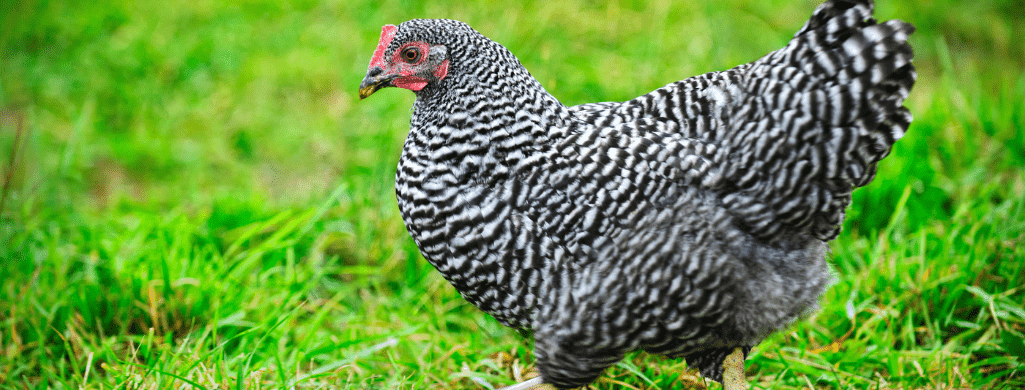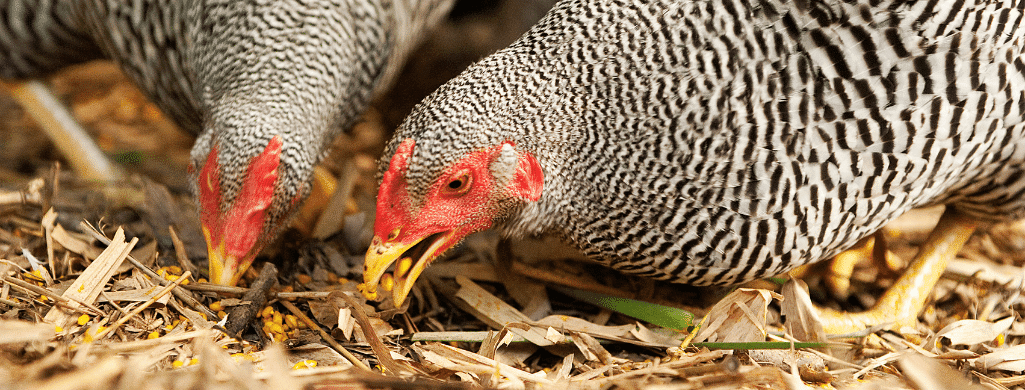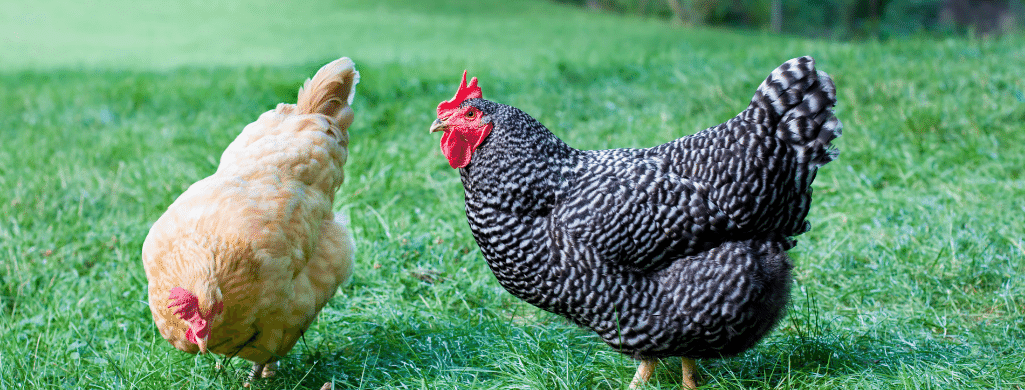Plymouth Rock chickens make a great dual-purpose breed, and many people love their meat.
But it’s not simply a matter of butchering them whenever you feel like it; you need to the best time to do it.
Most people butch their Plymouth Rock chickens between 16-20 weeks. At this age, you’ll get around 3 pounds of meat off of them. Let them grow for a couple of months for maximum meat yield. After 9-10 months, their meat becomes less tender, and the cost of upkeep outweighs the quality of their meat.
Read on to find out more about Plymouth Rock meat production.

Table of Contents
ToggleAre Plymouth Rock Chickens Good For Meat?
Plymouth Rocks are excellent meat-producing chickens.
Heritage breeds like the Plymouth Rock are known for tasting better than production chickens.
The difference between heritage birds and production birds is their slower growth rate. Backyard chicken keepers trade-off quick growth for better flavor.
These exceptional birds were a popular chicken breed during World War II. People were encouraged to keep them in their backyards for meat production to offset war rations.
Yet, they fell out of favor once the chicken industry boomed after the war, and faster-maturing chickens became the standard.
They are considered dual-purpose with a focus on meat production. However, they may be raised for egg production.
Hens will lay 4 eggs per week (about 200 eggs a year) for a staggering 10 years. Yet, they often go broody, interfering with constant egg production.
At What Age Are Plymouth Rock Chickens Ready to Butcher?
Barred Rocks reach full maturity at around 20 weeks of age.
Butcher them at this point and get 3-4 pounds of marketable meat.
Some owners butcher them as young as 14 – 17 weeks. This will give you less meat, making the carcasses seem puny.
Allow them to grow up to 7 to 8 months of age. This will let them bulk up, but broiler chickens consume a lot of feed, which can add to production costs.
After 9 to 10 months of age, the meat quality begins to decrease. Plymouths begin to be tougher.
Their meat can still be used but will do best as stew meat or chicken stock, not as a roasting bird.
For more details, check out our guide on Plymouth Rock chicken growth rates.

What is Plymouth Rock Chicken Meat Like?
Males reach a weight of 12 to 14 pounds at full maturity. Females are about 6 to 8 pounds. This equates to about 3 to 5 pounds of marketable meat.
These chickens are tasty but on the smaller side.
Plymouth Rocks come in many varieties, but the Barred Rock is the most well-known with its black and white striped feathers.
Some chicken owners claim the white varieties of Plymouth Rock are better for meat because they look cleaner when they are processed.
Bantam varieties are much smaller in size and wouldn’t be ideal for meat production.
The Plymouths’ yellow skin may be shocking to first-time chicken owners who are more familiar with the typical white skin of production birds.
However, skin color doesn’t affect the taste. In fact, different cultures view chicken skin differently.
Many European countries prefer yellower skin, whereas Asian countries tend to prefer darker chicken skin.
Nevertheless, 4 pounds of meat will feed approximately four people.
These birds have smaller breasts than some other meat chickens, so if you are looking for a lot of white meat, this may not be the bird for you.
Yet, they have long, huge legs providing delicious dark meat.
What To Feed Plymouth Rock Chickens For Meat
Plymouth Rocks are fantastic backyard birds who love to forage. Save on feed costs by letting your friendly birds search your yard for insects and other small pests.
They are curious and need plenty of space to roam. However, they are not great at defending themselves from predators and must be protected.
Even while letting them forage, you should supply them with an all-purpose broiler feed to bulk up your roosters.
These feeds have a higher protein content to add weight to your broiler chickens.
According to age, your chickens will consume quite a bit of feed, with full-grown, 9-month-old roosters consuming about 4 pounds of feed per day.
This cost is important to consider when deciding when to butcher your Plymouth Rocks.
Each additional week adds the cost of feed to your meat price.

How Do You Process Plymouth Rock Chickens for Meat?
Once your Plymouth Rock is ready for butchering, take your chicken to a processing facility or process it at home.
Processing facilities will take care of humanely slaughtering and converting your chicken into raw poultry. These cost approximately $3.50 per bird.
Of course, different processing plants will charge differently. Some charge by the pound, and others will charge additional fees.
These plants will take care of sanitation and feather plucking, leaving you with a frozen, completely ready-to-cook bird at the end.
Processing in this way is usually best for farmers with at least 25-50 broiler chickens to process at a time. Smaller operations need to process at home.
To process the bird at home, you would follow these steps:
- Butcher the chicken by capturing it, handing it up by its legs, and quickly slitting its throat.
- Place a bucket under the chicken and allow it to bleed. Hold the head firmly for a few moments until the bleeding stops.
- Scald the chicken carcass in boiling water for about 60-90 seconds. This should make it easier to remove the feathers.
- Immediately after scalding, remove the feathers by gently applying pressure to them.
- Some of the pin feathers may be tricky. So, take a sharp knife to remove these feathers under cold, streaming water.
- Eviscerate (remove the organs) of the chicken carcass, cut the feet and remove the tail to get rid of the oil gland.
- Stretch the neck and use a sharp knife to cut the head off. If you plan to keep the neck, gently twist the head to remove it. If desired, cut the head and neck off together.
Now, you should have a fully butchered chicken carcass ready to cook at eat. Seasoned Plymouth Rock owners suggest slow cooking these birds for the best results.
Roast them in the oven slowly over several hours to bring out the rich flavors of this heritage breed.
How useful was this post?
Click on a star to rate it!
We are sorry that this post was not useful for you!
Let us improve this post!
Tell us how we can improve this post?
